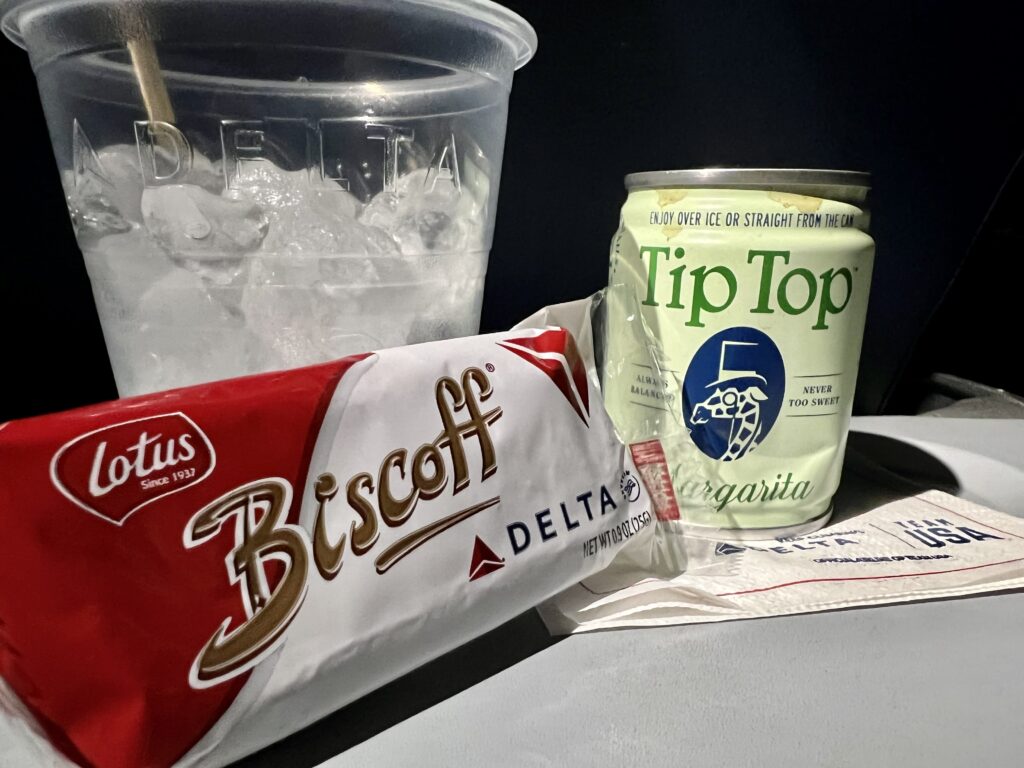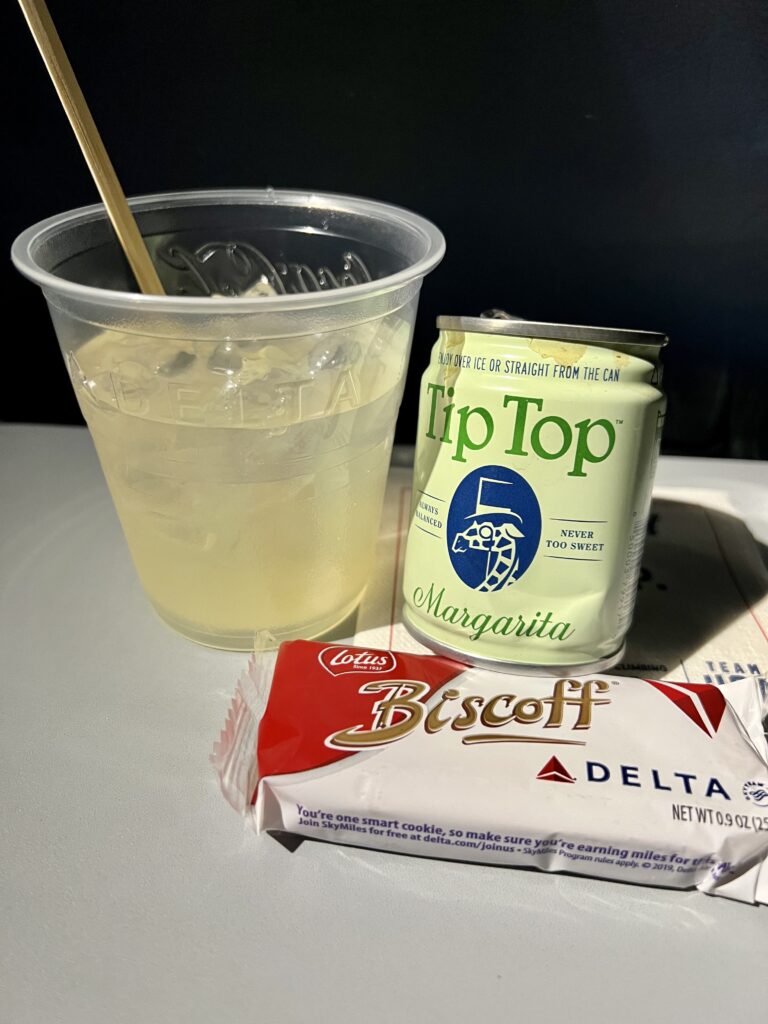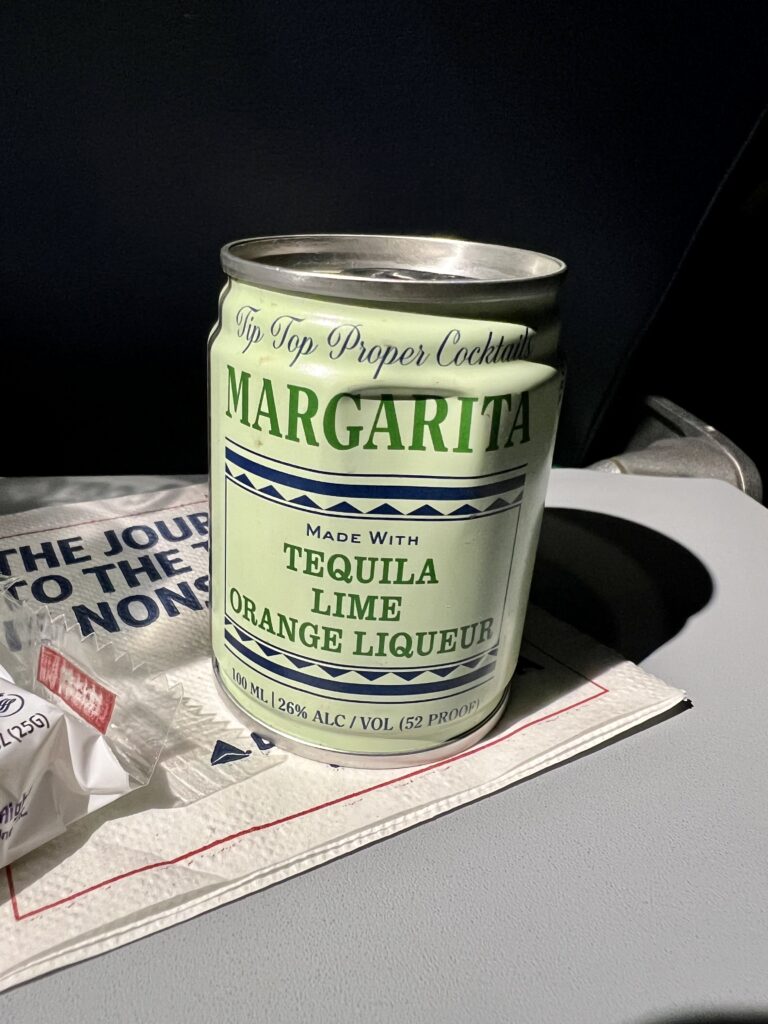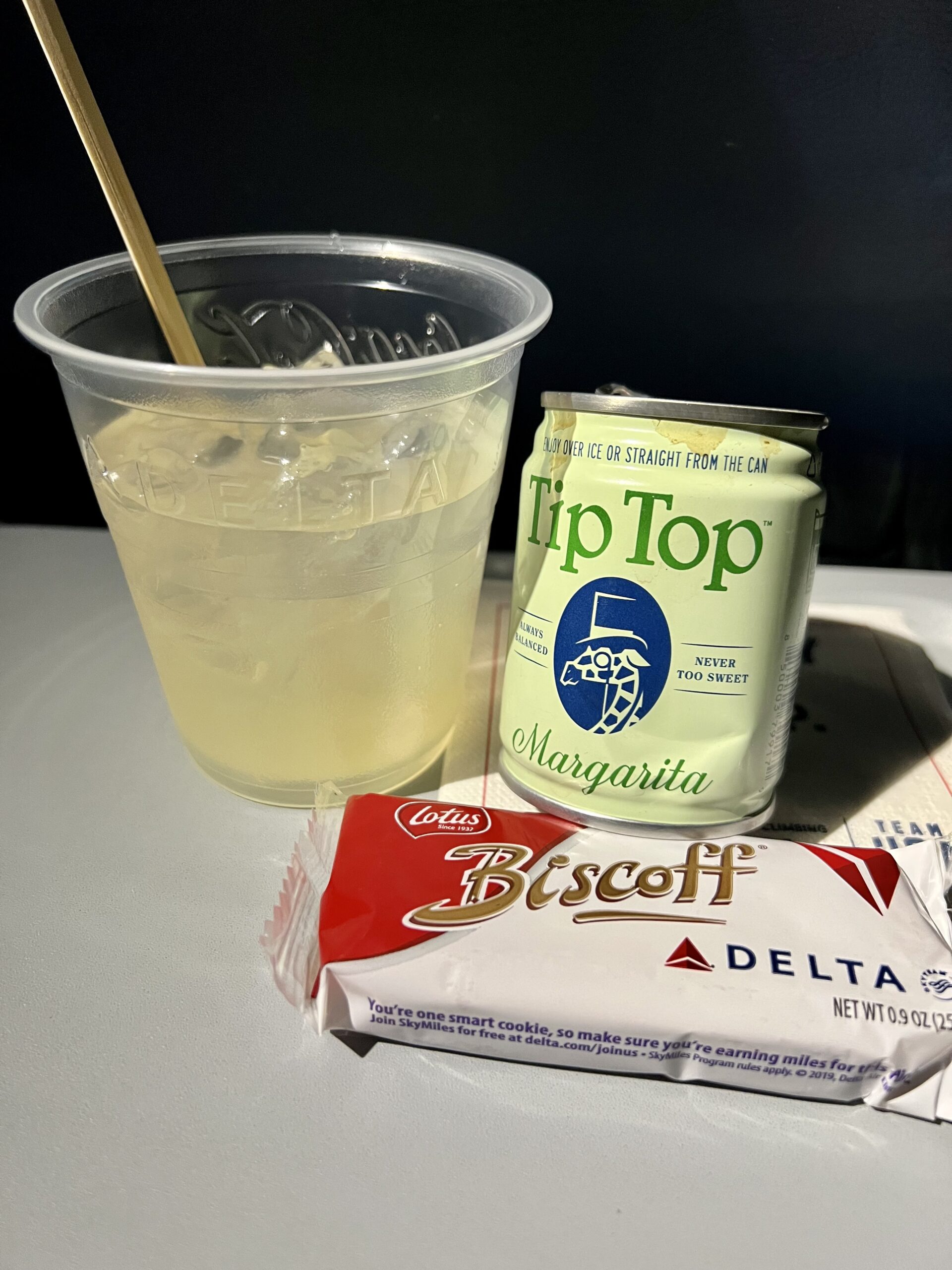
We recently got a chance to get out of town, and found ourselves flying Delta. Their inflight menu had a lot of the usual choices for inflight beer, wine, and liquor – like Woodford Reserve and Jack Daniels. Hidden away in a different menu was the pre-packaged cocktails – which included an intriguing giraffe with a top hat and monocle. The giraffe convinced us to kick off our vacation right, and so we tried Tip Top Margarita.
Tip Top Margarita
Tip Top Margarita comes in a 100 ml can. It features a cute giraffe logo that suckered us in. According to the label, it’s made with Tequila, Lime, and Orange Liqueur. It does not specify blanco or reposado tequila, or 100% agave or mixto tequila. The are made by Tip Top in Atlanta.
Please bear in mind this was evaluated on a plane, at about 10 pm. Lighting was difficult to evaluate.

Sight: Light green.
Smell: All the right notes of a margarita are present here, with touches of grassy tequila, lime, orange, and a hint of sweetness and salinity. There’s not quite a clear line between whether the tequila used is a reposado or a blanco, but there aren’t any obvious notes of neutral spirits on the nose. There is a bit of a flatness to the lime.
Sip: Things start off with a decent pop of acidity but become somewhat flat in the mid palate. The lime flavor seems to be the culprit here, possibly from the process of canning or elsewise to stave off effects of oxidation (which are not present – but are difficult to mitigate when using fresh lime juice). The palate has a nice tequila grassy flavor with a hint of caramelized sweetness and the orange does make it’s present known.
Savor: The ending picks up more orange and lime notes before giving a little breathing room to tequila.
Overall, Tip Top Margarita is clearly a Margarita and not a terrible one. It is however quite muddled giving clarity to neither the citrus nor the tequila. The unusual flatness plays a role in this as well, possibly to avoid the metallic taste oxidize limes present. In all, it is pleasant but uninteresting, and likely sub-par if you compared it to a fresh one you made yourself.
In Review – Tip Top Margarita
The problem that exists for evaluating Tip Top Margarita is the consideration of application and how the end product does. In a home setting, making a Margarita isn’t a particularly complex operation, and the end results are significantly better than Tip Top’s canned product. However, you’re unlikely to be bringing your shaking tin and limes on a plane with you, and in this sense, it takes what would be a somewhat difficult process, and makes a passable, consistent, and somewhat tasty product that you can serve on a plane.

But What About The Price?
The only significant downside here is cost. I paid $12 for one on a recent Delta flight, and it’s pushing the limits at that price considering a full beer, wine, or even an equivalent mini-bottle of liquor is $9-10 (and generally the flight attendant gives you the whole mixer with it). Priced on the ground, you can buy 8 of these for about $40 (or about $5 each) before shipping from their website. This isn’t bad for convenience, but consider the cost of a premium, high end margarita:
- A good bottle of 100% agave blanco tequila can be had for $30
- The standard premium orange Cointreau is $35
- Limes (which are currently expensive) are somewhere near $0.75.
- This places the cost of a premium margarita around $4.20, and you know exactly what went in it, and it’s fresh.
So how could you make this profitable? Theoretically use mixto tequila which has no where near the flavor for $10 a bottle. Throw in some cheap, artificially flavored triple sec at $10 a handle, and get commercial lime concentrate. Boom – cheap margarita (perhaps around $1.90 before canning and packaging – cost that could be reduced with bulk industrial purchasing). Please be aware, there’s little to no information on how Tip Top is making these. I am not saying this is how they do it – but I am providing one potential path to how canned margaritas could be profitable at that price.
In all, Tip Top Margaritas are fine in certain settings where access to real tequila and limes wouldn’t be practical. Just don’t expect the world from it, and you won’t be disappointed. If you have the opportunity, means, and time, make your own Margarita (recipe here). It’s cheaper and they taste better for just a little more effort!
